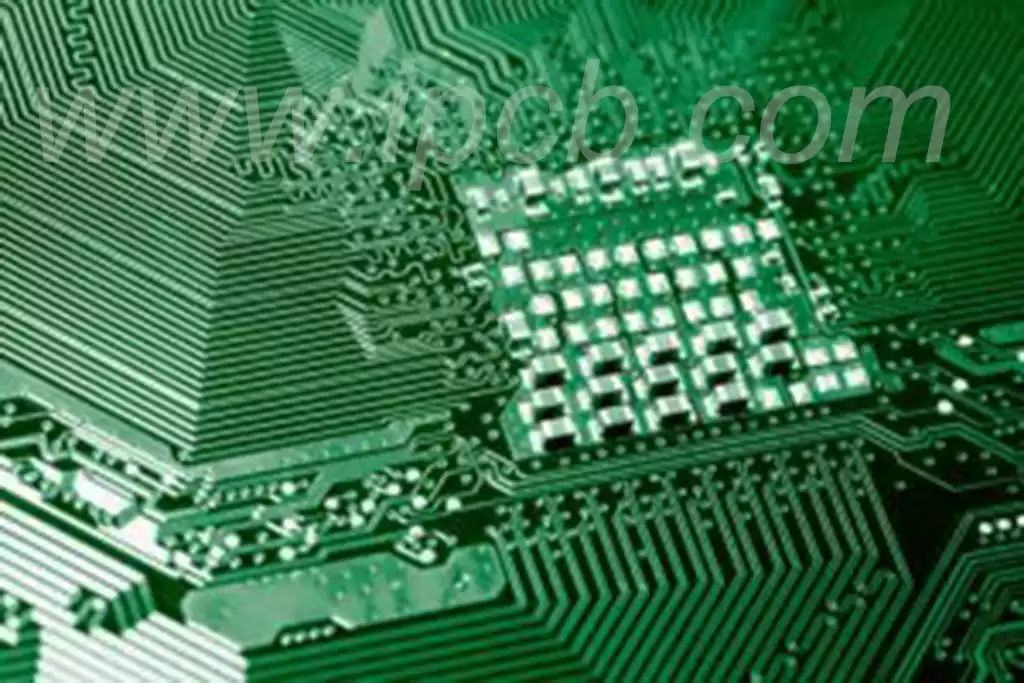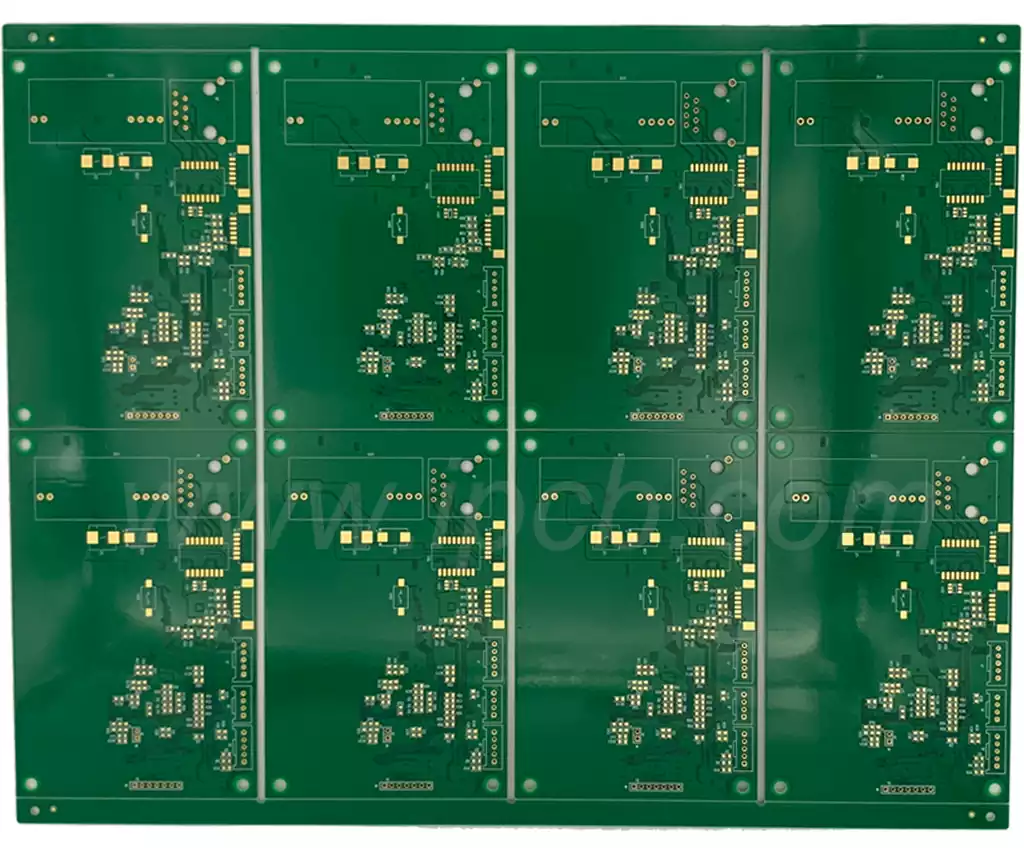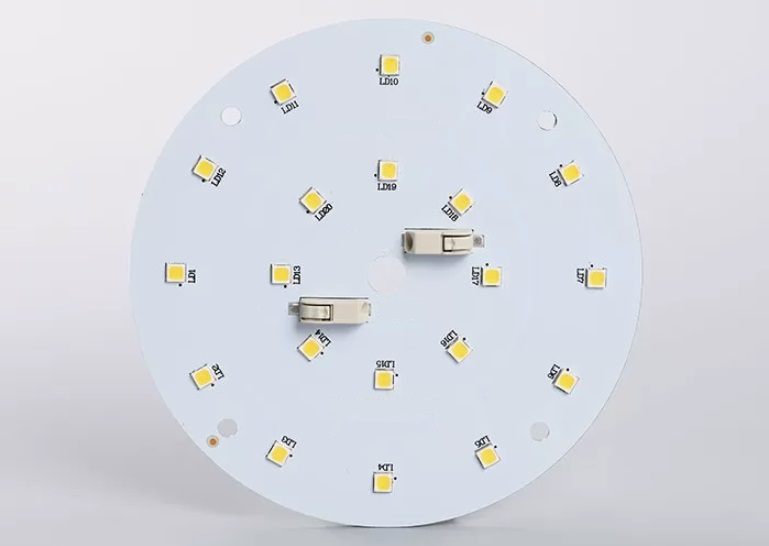Radio control circuit board is a kind of circuit board used for wireless communication and control, which is mainly used to realize the function of sending and receiving electric signals. This kind of circuit board is widely used in all kinds of wireless devices, such as remote controls, wireless sensors, smart homes and other wireless communication systems.
Main components of a radio control circuit board
Wireless Receiver Module
The wireless receiver module is one of the core pcb components of the radio control circuit, which is responsible for receiving wireless signals from the remote control. The module is capable of converting the received signals into electrical signals for subsequent processing. Its design needs to be compatible with the micro remote control to ensure the reliability and accuracy of signal reception.
Pulse Formation Circuit
The role of the pulse forming circuit is to convert the received signals into suitable pulse signals which can further drive other control circuits. The design of this circuit is very important because it requires precise processing of the signal to ensure the effectiveness and accuracy of the subsequent control instructions.
Forward and Reverse Control Circuit
The forward and reverse control circuit is responsible for controlling the movement direction of the wireless RC model, including forward, backward and steering functions. In practical application, the circuit can automatically switch the direction according to the received instruction to ensure the flexible operation of the model.
Power Supply Module
The power supply module provides the required power support for the entire radio control circuit board, which usually includes batteries and related power management circuits. A stable and reliable power supply is an important prerequisite to ensure the normal operation of each module, so its power requirements and power supply methods need to be considered comprehensively during design.
Main Processor
The main processor is the “brain” of the radio control circuit board,responsible for processing the received signals,and in accordance with the preset program to perform the corresponding tasks. It coordinates the operation of the entire system by controlling the work of other circuits to achieve complex control functions.

Factors to keep in mind when designing radio control circuit board:
Power Wiring
Power wiring is a critical factor in the design of radio control boards. Proper power wiring can effectively reduce power noise and ensure circuit stability under varying loads, thus improving overall performance. It is also critical to ensure proper separation of power and signal lines to avoid interference and signal crosstalk problems.
High-Speed Signal Processing
For radio control circuits, handling high-speed signals is an important part of the design. Designers need to ensure that the impedance of the signal lines is matched to prevent reflections and signal loss. This often involves precise calculations of the width and layout of the signal alignment to maximize signal integrity and transmission efficiency.
Material Selection
Material selection for radio control circuit boards is also an integral part of the design process. Choosing the right base material can reduce signal loss and improve the overall performance of the circuit. Designers should pay attention to the material’s dielectric constant, thickness, and resistance to high-frequency signals to ensure stable circuit operation.
Layout Design
Layout design requires precise arrangements to ensure proper placement of components and optimization of signal paths. Reasonable layer stacking and component layout not only help the effective transmission of signals, but also reduce interference caused by the proximity of circuits, thus improving the overall performance of the circuit.
Safety and Standards Compliance
During the design process, relevant safety standards and regulations, such as IEC, FCC, etc., must be followed to ensure that the circuit design complies with international and regional safety requirements. Compliant design can reduce the risk of the device in use and make it more reliable in different environments.
Testing and Optimization
After the design is completed, adequate testing and optimization is also essential. Through actual testing, potential problems can be identified and modified accordingly to ensure the reliability and stability of the board in real-world applications. This can effectively avoid failures due to design flaws.
The basic function of the radio control circuit board
- Control Command Sending
One of the basic functions of a radio control circuit board is to send control commands to various hardware components. The transmitter will encode the control signals and modulate them onto the wireless signals and then transmit them for remote control. This function is widely used in remote controls and other wireless control devices, allowing the user to conveniently operate the device. - Signal reception and decoding
The radio control circuit board is not only responsible for sending signals, but also needs to receive wireless signals from other devices. The receiver decodes the received signals and extracts the control commands contained in them. This process ensures that the device can respond to commands from the remote control or other control devices in a timely manner to keep the system running efficiently. - System Coordination and Integration
The radio control circuit board acts as a system coordinator, ensuring effective interaction between the various components. Through the control circuit board, each electronic device can perform specific operations according to the received control commands, forming a unified system. For example, in a wireless remote control, the control circuit board is responsible for managing the transmit and receive operations and realizing the interaction between different devices. - Flexibility in signal processing
The radio control circuit board has the flexibility of signal processing, which can be adjusted and optimized according to different application requirements. This flexibility allows the radio control system can be adapted to a variety of use scenarios, whether it is residential automation, industrial control, or medical equipment and other fields, are able to provide effective wireless control solutions. - Wide range of application scenarios
Radio control boards are widely used in various fields, including home automation, industrial monitoring, wireless sensor networks and so on. Due to its efficient and convenient control method, this technology has become indispensable in modern technology. Through radio control circuit boards, it not only improves the intelligence of the equipment, but also enhances the user experience.
Application of radio control circuit boards
They are widely used in consumer electronics products, such as smart home devices, wireless remote controls and smartphones. These devices rely on circuit boards to realize wireless transmission and reception of data for remote control and intelligent management. With integrated radio control circuit boards, users can easily operate their devices and improve their quality of life.
In industrial control systems, they are used in a variety of automated devices such as robots, CNC machine tools and production line automation for precise control and operation. By transmitting control signals wirelessly, the boards are able to increase productivity and reduce human error.
In smart home systems, it provides wireless communication capabilities for smart devices in the home, enabling interconnectivity between devices for more advanced automation management. For example, smart lighting control and temperature control systems can be centrally operated via radio-controlled circuit boards to provide a more comfortable living environment.
In the field of automotive electronics, they are used for navigation systems, keyless entry systems and in-car entertainment systems. These boards ensure high-speed wireless transmission of data and effective collaboration between different systems,thus improving vehicle intelligence and driving safety. The integration of circuit boards in automobiles makes them more powerful and intelligent.
As a core component of modern wireless communication and control technology, radio control circuit boards have demonstrated their importance and potential in a wide range of applications.From consumer electronics to industrial control,to smart home and automotive electronics, these boards undoubtedly enhance the intelligence and automation of equipment,making life and work more convenient and efficient.



